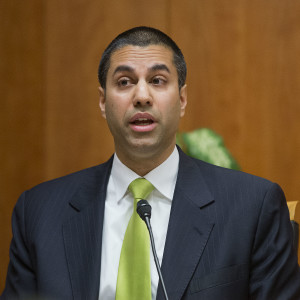A Federal Communications Commissioner highlighted ongoing fraud in the agency’s low-income phone subsidy program in a letter late Tuesday, months after the agency voted to expand the program’s spending and reach.
In a letter to the CEO of the Universal Service Administrative Company (USAC) — the organization charged with administering the program — FCC Commissioner Ajit Pai highlighted ongoing potential fraud by wireless providers when enrolling subscribers in Lifeline, which grants low-income Americans a $9.25 monthly subsidy to help pay for phone and broadband service.
According to Pai, roughly one-third of the 2.5 million Lifeline subscribers — 821,482 — enrolled between October 2014 and February 2015 were added by wireless providers who bypassed a database meant to flag consumers who have already enrolled with another company or by using different information, like a name abbreviation or alternate address.
Before enrolling subscribers, wireless providers — who essentially receive free business from the program — are supposed to submit the information of potential enrollees, including name, date of birth and Social Security numbers, to the National Lifeline Accountability Database (NLAD) and verify they haven’t previously enrolled.
Last month, the FCC announced its intention to fine wireless provider Total Call Mobile more than $51 million for enrolling tens of thousands of duplicate and ineligible consumers — the largest fine the agency has ever issued a Lifeline provider. According to Pai’s letter, Total Call Mobile agents overrode the NLAD database for 99 percent of its new subscribers in the last quarter of 2014.
“Even setting aside Total Call Mobile, the other 11 wireless resellers mentioned above were responsible for 616,937 of those enrollments,” Pai said of a list of redacted providers he named in the letter. “That’s outrageous.”
The FCC found that since 2014, Total Call Mobile received almost $10 million in improper payments from Lifeline fraud.
Though the USAC began reviewing overrides itself last February, Pai said he remains “concerned that existing safeguards still may let unscrupulous carriers exploit the program.”
Under the current override process, USAC staff doesn’t review eligibility documents from a potential subscriber before authorizing an override, but only a certification from the wireless carrier that the documents were reviewed.
“In other words,” Pai wrote, “the integrity of the process relies on the integrity of the carriers — the only ones who know if a subscriber’s identity is legitimate.”
Since the changes, many of the subscribers who used the process before have already enrolled tens of thousands of subscribers under the new override process, with another 494,921 enrolled without any address verification, which carriers can override in the case of rural or tribal addresses by simply pressing a button.
“There is apparently much work to be done before American taxpayers can know that the money they contribute each month to the fund is not wasted or put to fraudulent use,” the Republican commissioner’s letter reads.
In response to the continuing widespread use of the override process, Pai asked USAC to provide his office with any information on investigations, reviews, audits, USAC notices to carriers of duplicate enrollments, how many subscribers used food stamps for eligibility verification and how many used blank or temporary Supplemental Nutrition Assistance Program (SNAP) cards.
The commissioner additionally asked why the new process, meant to reduce fraud, doesn’t compel USAC to review documents itself in the case of overrides.
Pai recently raised the issue during a congressional hearing, where he and FCC Chairman Tom Wheeler were invited to testify on the FCC’s move earlier this year to expand the program to include broadband internet, and increase the program budget from $1.6 billion to an uncapped $2.25 billion.
“There is a database that currently carriers can override, and that’s part of the reason why we’re seeing some carriers now simply bypassing it, rejecting the no answer that they get from it, in order to sign up customers,” Pai said while discussing Wheeler’s inclusion of a new “national eligibility verifier” in the expansion.
The new plan’s database will be comprised of income eligibility information from federal programs like SNAP and Medicaid, which providers must ping to confirm a potential subscriber is eligible before enrollment.
Wheeler said the new system corrects the “fox guarding the hen house” scenario he inherited as commissioner.
“I’m afraid that this time around I wouldn’t be all that much more optimistic,” Pai said.

